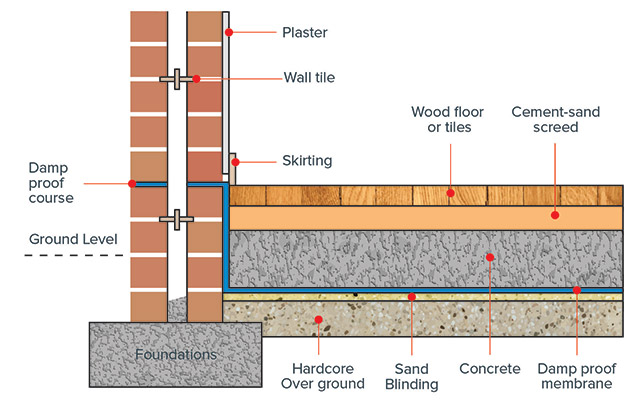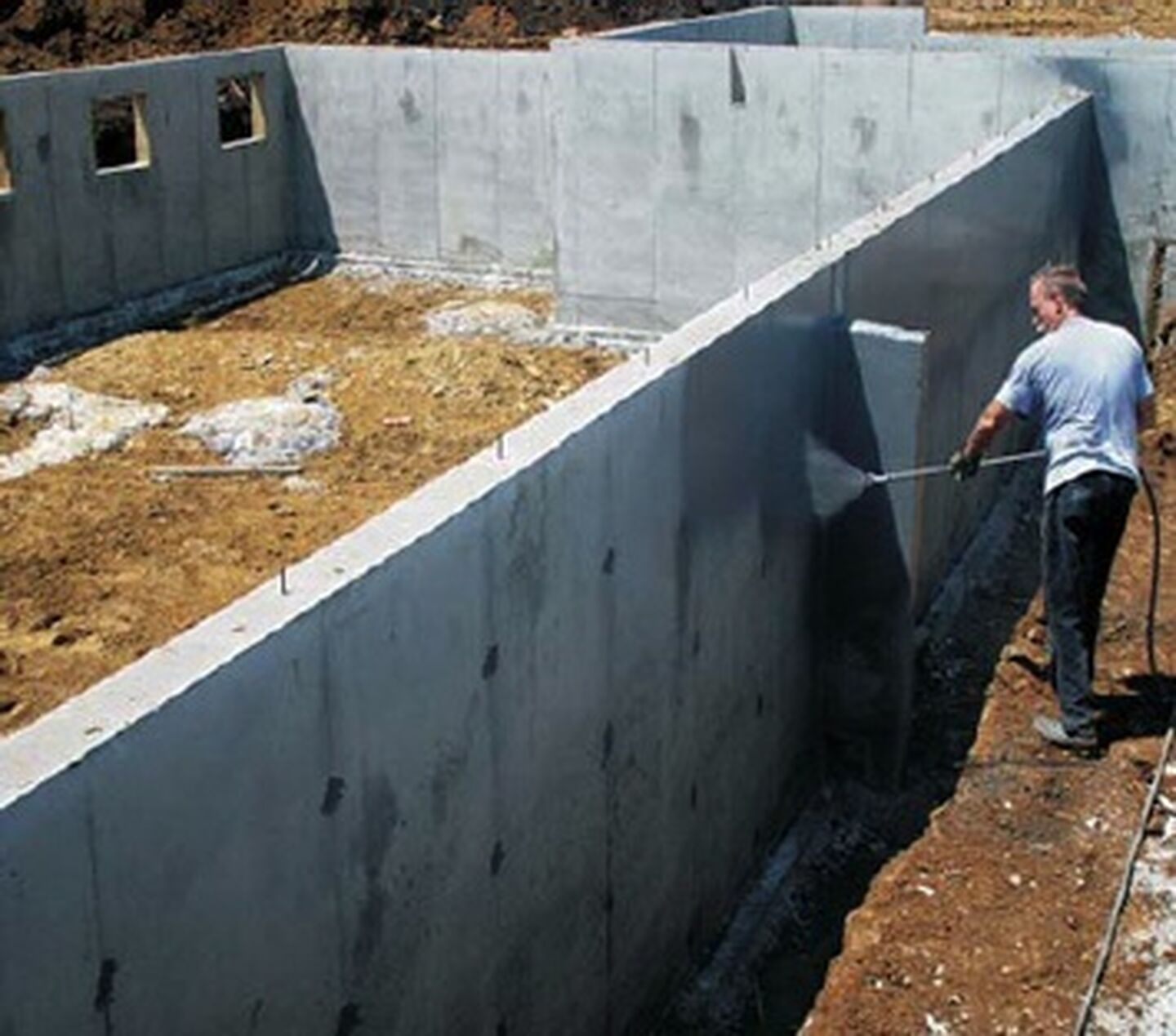Discovering the Numerous Techniques and Solutions for Effective Damp Proofing
Wetness in buildings positions significant challenges to both structural stability and indoor air top quality. Numerous methods and options have actually emerged to combat this prevalent issue. From conventional damp-proof membrane layers to ingenious chemical therapies, each method provides one-of-a-kind benefits. Understanding these alternatives is vital for efficient wetness control. Selecting the right service depends on details building problems and needs, motivating more exploration right into the most reliable damp proofing approaches offered.
Comprehending the Root Causes Of Dampness
Moisture can arise from different resources, understanding these reasons is vital for effective remediation. Frequently, dampness stems from three key resources: climbing wet, permeating wet, and condensation. Increasing moist occurs when groundwater travels up-wards via porous materials, such as brick or stone, typically due to a lack of a reliable obstacle (damp removal newcastle). Penetrating damp is generally triggered by exterior aspects, including roof covering leaks, defective seamless gutters, or damaged walls, enabling water to penetrate a property. Condensation, on the other hand, arises from excess dampness airborne, typically exacerbated by poor air flow and temperature level differences, resulting in water beads basing on surfaces. Determining these underlying issues is vital, as each kind of moisture calls for a tailored technique for removal. Correct assessment helps in establishing one of the most effective remedies, eventually protecting the structural integrity of a building and improving interior air quality
Traditional Damp-Proof Membranes

Chemical Damp-Proofing Solutions
Chemical damp-proofing services supply an innovative method to stop wetness intrusion in buildings. These approaches typically include the application of fluid chemicals that pass through stonework and create a barrier against rising wet. Typically used chemicals consist of silanes, siloxanes, and other water-repellent agents that react with surface area materials to develop a hydrophobic layer.The application procedure typically needs drilling holes right into the wall surfaces, infusing the chemical option, and permitting it to heal. This approach is specifically helpful for older frameworks where standard damp-proof membrane layers might be not practical. Chemical damp-proofing can be much less turbulent and more economical than extensive renovation projects.While efficient, these remedies depend on correct application and ecological problems for peak performance. mould removal newcastle. Routine maintenance and monitoring are necessary to assure the durability of the damp-proofing treatment. On the whole, chemical damp-proofing represents a flexible alternative for securing buildings versus moisture-related damages
Cavity Wall Surface Construction Methods
Tooth cavity wall surface building and construction strategies provide various benefits, especially in wetness control and power efficiency. By including an air space between 2 layers of stonework, these walls efficiently reduce water ingress while boosting insulation. This combination not just shields frameworks from dampness yet likewise adds to decreased power consumption.
Advantages of Tooth Cavity Wall Surfaces
When thinking about reliable damp proofing approaches, the benefits of dental caries walls stand apart plainly. Tooth cavity walls include 2 separate layers, creating an air space that properly minimizes wetness penetration. This style minimizes the danger of dampness, as the external wall surface works as an obstacle against rainfall and water access. Furthermore, cavity walls improve thermal insulation, which adds to power performance by decreasing heat loss. They also provide audio insulation, helping to develop a quieter interior atmosphere. The air void enables for ventilation, which helps in wetness control and minimizes the possibility of mold and mildew growth. These benefits not only enhance the total convenience of a building but additionally add to its longevity and architectural stability.
Moisture Control Approaches
Effective dampness control methods are critical in dental caries wall construction to ensure long-term security against dampness. One key approach involves the consolidation of weep openings, which facilitate water drainage from the tooth cavity, protecting against accumulation. In addition, making use of breathable membranes can aid manage moisture levels while permitting trapped vapor to leave. Appropriate positioning of insulation is also crucial, as it should not obstruct drainage paths. Ensuring that the external leaves of the tooth cavity wall surface are constructed with water-resistant materials enhances total resilience. Normal maintenance checks are important to recognize any kind of clogs or damage early, guarding the framework's stability. Ultimately, a mix of these techniques creates a robust protection against dampness invasion in dental caries walls.
Insulation and Power Effectiveness
Insulation plays a vital role in enhancing energy effectiveness within tooth cavity wall surface building and construction. By integrating protecting materials, these walls develop a thermal barrier that decreases heat loss and lowers energy consumption. Effective insulation not just assists keep a stable indoor temperature however additionally minimizes the danger of moisture, as it protects against condensation within the wall cavity. Numerous strategies, such as making use of inflexible foam boards or mineral woollen, can be employed to accomplish perfect insulation performance. Furthermore, appropriate installment is necessary to ensure that gaps and spaces are decreased, which can otherwise compromise power efficiency. Eventually, a well-insulated dental caries wall surface contributes considerably to overall sustainability and reduces home heating and air conditioning prices for home owners.
Exterior Damp Proofing Approaches
External damp proofing techniques are essential for safeguarding frameworks from wetness infiltration. 2 effective strategies include the application of water resistant membrane layers and the setup of French drains. These solutions aid reduce water buildup and maintain the stability of buildings.
Waterproof Membrane Application
While numerous methods exist for stopping moisture ingress, the application of waterproof membrane layers continues to be a very reliable external moist proofing method. These membranes are usually made from materials such as polyethylene, rubber, or changed bitumen, providing a durable barrier versus water infiltration. The installation process includes applying the membrane layer to the external surface areas of walls or structures, making certain full protection to avoid leakages. Correct attachment and securing at joints are critical to maximizing effectiveness. Waterproof membranes can be applied in various forms, including liquid coverings and sheet membrane layers, permitting versatility based on the certain needs of the framework. This approach not just shields structures from wetness but also improves their durability and architectural stability.
French Drain Installation
One reliable approach for handling groundwater and stopping wetness accumulation around a structure's structure is the setup of a French drain. This water drainage system is composed of a trench loaded with crushed rock and a perforated pipeline that redirects surface water far from the foundation. Proper installment calls for cautious preparation, making certain that the drain slopes far from the structure to facilitate ideal water circulation. In addition, the place of the drain is vital; it needs to be placed in areas prone to merging or excess wetness. Regular upkeep, including cleaning particles from the gravel and ensuring the pipeline remains unblocked, is essential for lasting performance. Eventually, a well-installed French drainpipe can greatly reduce the threat of water-related issues in foundations and cellars.
Inside Waterproofing Techniques
Inside waterproofing methods are essential for shielding a building's inside from dampness infiltration and possible water damages. These techniques typically include the application of customized materials and strategies developed to develop a moisture barrier within the framework. One usual approach is using water-proof coverings or sealers on wall surfaces and floors, which stop dampness from penetrating surfaces.Additionally, setting up indoor water drainage systems, such as sump pumps, can effectively handle water build-up in cellars and creep rooms. An additional technique entails the usage of vapor barriers, which are installed to prevent moisture activity from the ground into living spaces.Moreover, attending to any kind of cracks or gaps in walls or foundations with suitable sealants assures a detailed defense versus water intrusion. By carrying out these interior waterproofing strategies, homeowner can substantially lower the risk of mold development, architectural damages, and other moisture-related issues. Proper implementation of these techniques is essential for lasting security and building honesty.
Regular Upkeep and Evaluation Practices
Routine maintenance and evaluation practices are crucial for assuring the lasting performance of damp proofing remedies in any kind of building. Routine checks make it possible for home proprietors to recognize very early indications of dampness invasion, such as peeling off paint, mold and mildew growth, and stuffy odors. These indicators can indicate underlying issues that require prompt attention.Inspections must be carried out at the very least each year, focusing on at risk locations like basements, creep spaces, and outside wall surfaces. During these analyses, homeowner must take a look at sealers, drain systems, and ventilation to verify they work correctly.Additionally, maintaining seamless gutters and downspouts is crucial, as clogged up systems can result in water buildup near the structure. Executing a routine maintenance timetable, along with timely fixings, can significantly expand the life expectancy of moist proofing measures and secure the architectural stability of the structure. Proactive procedures eventually add to the overall health and wellness and safety of the living environment.
Frequently Asked Inquiries
How Long Does Damp Proofing Normally Last?
The period of damp proofing effectiveness differs, generally lasting between 20 to half a century. Variables such as application top quality, ecological conditions, and upkeep methods substantially influence the long life of the wet proofing treatment.

Can I Damp Evidence My Home Myself?
The specific contemplated the usefulness of do it yourself damp proofing. With correct research and the best materials, it is possible. They also identified the relevance of professional assistance to guarantee lasting performance and prevent future problems.
What Are the Indicators of Inefficient Damp Proofing?
Signs of inefficient damp proofing consist of consistent musty odors, noticeable mold and mildew development, peeling off paint, wet patches on walls, and timber degeneration - mould removal newcastle. Property owners should resolve these issues immediately to avoid further damage and health concerns
Does Damp Proofing Affect Indoor Air High Quality?

Just How Much Does Specialist Damp Proofing Cost?
Expert wet proofing prices vary considerably, commonly varying from $1,000 to $5,000 depending on the residential or commercial property's size, the level of the damp problem, and picked methods. Each scenario needs a tailored assessment for accurate rates. Commonly, wetness stems from three primary sources: rising moist, permeating wet, and condensation. When considering effective moist proofing techniques, the benefits of tooth cavity wall surfaces stand out plainly. Exterior wet proofing approaches are essential for safeguarding structures from moisture infiltration. While various methods exist for stopping wetness access, the application of waterproof membranes remains an extremely efficient outside damp proofing technique. Signs of ineffective wet proofing consist of relentless stuffy smells, visible mold development, peeling off paint, moist patches on walls, and timber degeneration.